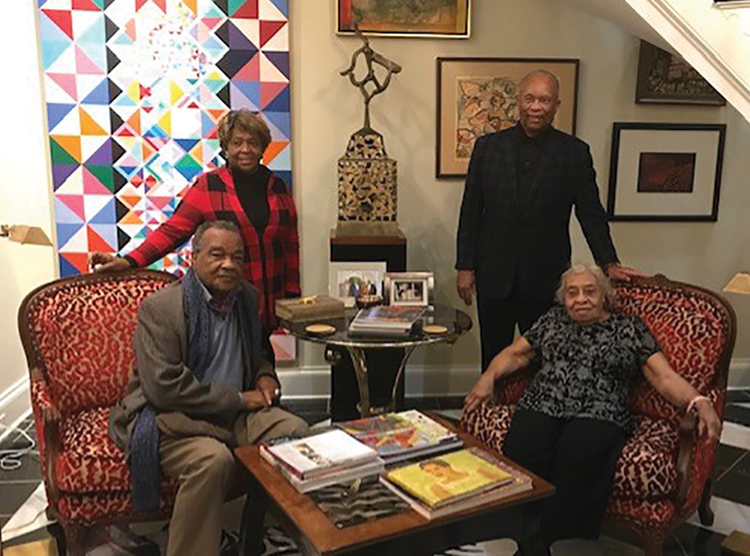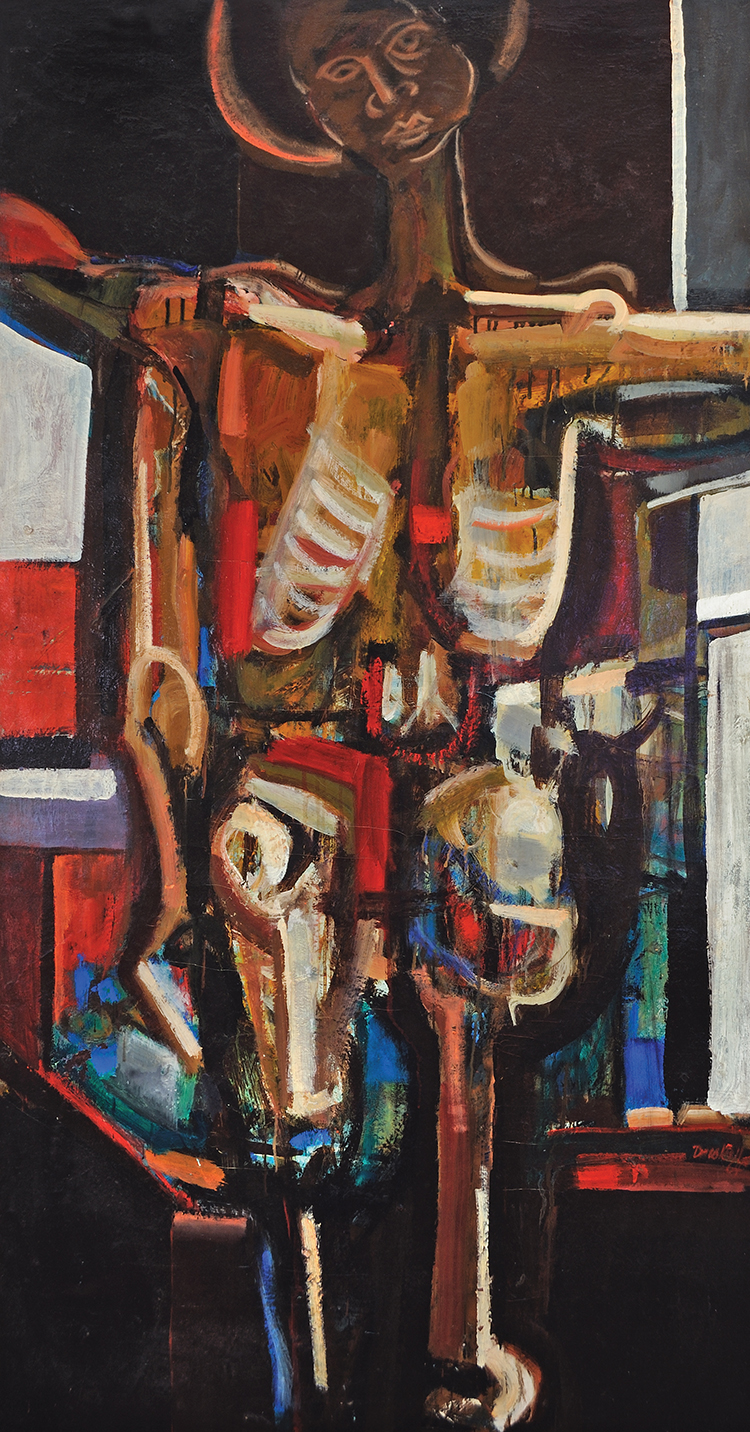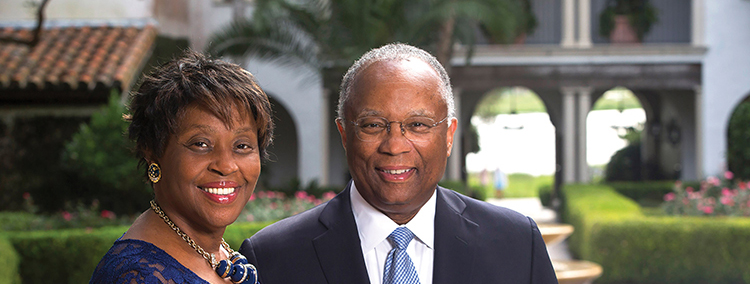
Brenda and Larry Thompson, David Driskell, and Thelma Grace Driskell
Brenda and Larry Thompson came to Atlanta in 1977 when Larry was beginning his career as a lawyer at King and Spalding. They began their longtime association with the High as a young couple, visiting the Museum every other week after church as their interest in art grew. Larry said carving out time to spend in the Museum each week was “a welcome moment of serenity.”
Their connection to the Museum continued to grow. Brenda said that the Museum has had a real pull for her over the past twenty years. “The High really has increased their exhibitions of things I’d like to see. Shows like Henry Tanner, Jacob Lawrence, Romare Bearden, Beauford Delaney, To Conserve a Legacy. . . . It has become much more inclusive in the works it would show,” she said.
Their support of the Museum began with a Dual membership, but Larry said they always hoped they could do more. They eventually became Circles members and avid supporters of the annual David C. Driskell Prize in African American Art and Art History and of the Driskell African American Art Acquisition Endowment. This year, they also stepped forward as major funders of David Driskell: Icons of Nature and History.
“We are pleased and honored to support the exhibit at the High. For the High, it’s very good that the exhibit is starting here because the High recognized David’s brilliance for many years. I am certainly appreciative, as a friend of David’s, of what the High did. I think it’s very important,” said Larry.
The friendship between the Thompsons and Driskell grew over the years: They attended his many programs at the High; David’s writings were a source of information as they built their collection of leading African American artists; and David befriended them and took them under his wing as they continued their collecting. Then, in 2009, he advised on the first exhibition of their collection at the David C. Driskell Center at the University of Maryland (curated by Drs. Adrienne Childs and Robert Steele).

Black Crucifixion
The Thompsons went on to collect twenty-three pieces of Driskell’s own work, including Black Crucifixion, which is on loan for the current exhibition. Reflecting on the artwork, Brenda said,
When we first saw Black Crucifixion, it was compelling for Larry and me. We were attracted to the work’s color, form and composition. For me, the painting felt like a depiction of a Black Christ. However, I was not clear on all the symbolic layers. The blocks of color were reminiscent of stained glass; yet the Christ figure looked more pained and skeleton-like than you normally would see on stained glass windows. It was puzzling.
Sometime later at a party we held for he and Thelma, I asked David to tell us all about the work. He indicated the painting was completed in 1964 when he was teaching at Howard University in the midst of the civil rights movement. During those years, so many terrible incidents were happening to African Americans. He felt that he needed to do a tribute to people who were being symbolically crucified. David saw this work as a “social crucifixion.” As I remember, this painting was a statement of the woes of the world and the tragedy that was going on at that time.
The Thompsons feel that the retrospective of Driskell’s work “will be a chance for people to understand David’s legacy and his contributions to the art field. To see the quality of the kind of work he did.” Thinking back on the man Driskell was, Brenda said they think of David as a renaissance man. “He was a scholar, he was a curator, an historian, a painter, print maker. There were so many categories David encapsulated. I knew him first as a writer telling the important stories of African American artists. This exhibition for David was a way of saying to the world, this is my work. He understood this duel role he had, which was to document the story.”
Larry added, “I am very proud of the fact that the High is a place where this exhibit will start. I’m pleased the Museum continues to have a more and more diverse and inclusive collection and art shows and continues to reach to the communities it serves, especially the young people.”
